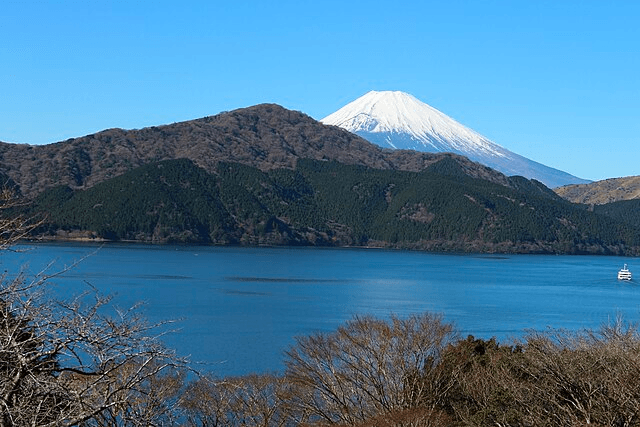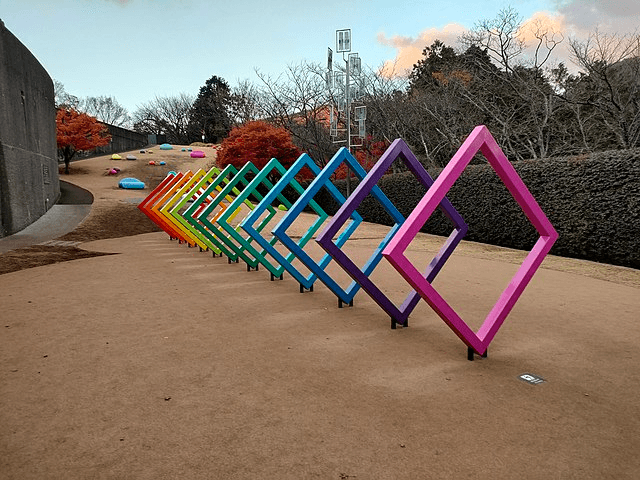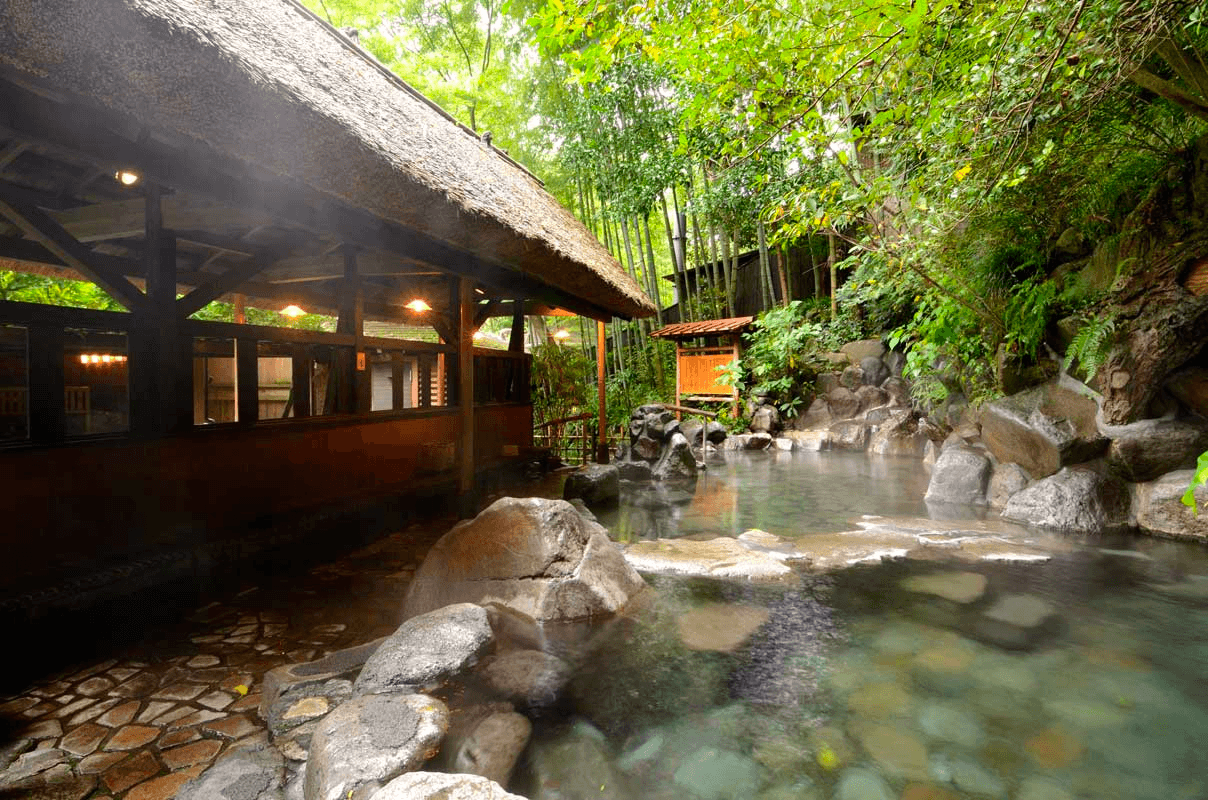Roaming Hakone: Embracing Nature and Tradition
Your pocket guide to what to see and do at Hakone
Hakone is one of the best places to get a view of Mt. Fuji. Less than two hours away from Tokyo, this charming destination is home to breathtaking natural beauty, historic landmarks, and rejuvenating hot springs. Thanks to its natural beauty and accessibility, it is a popular destination for both domestic and international tourists. Whether you're a history buff, nature lover, or just looking for some R&R, Hakone will captivate your heart.

History and Culture of Hakone
One of the reasons to visit Hakone is to experience the region's rich history and culture. The area has played a significant role in Japanese history, dating back to the Edo period. Visitors can explore the Hakone Sekisho, a historic checkpoint that was used to regulate the population and traffic between Tokyo and Kyoto during the Edo Period. For those interested to learn more about the checkpoint, consider paying a visit to the Hakone Sekisho Museum near the checkpoint.
For those interested in Japanese art and architecture, the Hakone Open-Air Museum is a must-visit destination. The museum features a collection of sculptures and artwork from both Japanese and international artists, and the outdoor setting makes it a unique experience.

And, of course, no visit to Hakone is complete without a trip to the iconic torii gates at the Hakone Shrine. It's a serene and spiritual place, with a history dating back over 1,300 years. Visitors can take a stroll through the shrine's beautiful gardens and admire the stunning architecture.
Exploring Hakone's Natural Beauty
Hakone is also famous for its natural beauty, which is on full display throughout the year. The region is home to stunning landscapes, including the iconic view of Mount Fuji. Visitors can take a leisurely river cruise on Lake Ashi, which offers scenic views of the surrounding mountains and forests. The lake is also a great place to go fishing or take a paddleboat ride.

Be sure to check out the Owakudani Valley an active volcanic valley known for its hot springs and sulfur vents. Here, you can hike around the area and experience the hot springs and sulfur vents up close, while enjoying stunning views of Mount Fuji.
And for one of the best ways to travel around Hakone, hop onto the Hakone Ropeway. The ropeway ride offers stunning views of the surrounding mountains and forests, and the valley itself is a unique destination.
Finally, for those who love hiking, Hakone has several hiking trails of varying difficulty that you can explore. Some of the most popular trails include those around Lake Ashi and Mount Kintoki.
Getting to Hakone
Getting to Hakone is easy and convenient, thanks to its accessibility from Tokyo and other major cities. If you're traveling from Tokyo, one of the most straightforward ways is to take the Odakyu Limited Express Romancecar from Shinjuku to Hakone-Yumoto Station. The journey will take about 1.5 hours.
Top Attractions in Hakone
Now that you're in Hakone, get ready to explore some of the most beautiful and unique attractions Japan has to offer. Here are some additional details on the top attractions and activities on offer:
Lake Ashi

Most visits to Hakone will start from Lake Ashi, a stunning crater lake in the center of Hakone. The lake is surrounded by mountains and forests, offering visitors a peaceful and serene environment to relax and take in the natural beauty of Japan. Visitors can take a leisurely boat ride around the lake and enjoy stunning views of Mount Fuji on a clear day. Be sure to also go on a ride on the Hakone Pirate Ship. For some of the best views, head over to the Moto-Hakone area around Lake Ashi. For those who prefer a more active adventure, there are hiking trails around the lake as well as opportunities for fishing and kayaking.
Hakone Shrine
The Hakone Shrine and the torii gates make up some of the most iconic structures of Hakone. The shrine is known for its stunning architecture and scenic views of Lake Ashi. Visitors can take a leisurely walk through the shrine's grounds, which include torii gates, stone lanterns, and a beautiful red bridge. Visitors can also participate in traditional Shinto rituals, such as purification and prayer, to gain a deeper understanding of Japanese culture and religion.
Owakudani Valley
Owakudani Valley is a natural wonder that is not to be missed. The valley was formed by the eruption of Mount Hakone over 3,000 years ago and is now home to hot springs, sulfur vents, and bubbling mud pools. Once at Owakudani, visitors can take a walk on the hiking trails or try the famous black eggs, which are boiled in the hot springs and said to add seven years to your life! Be sure to also try the black soft-serve ice cream that is unique to the area!

🚌 To get to Owakudani, you can take the Hakone river cruise to Togendai Port, and transfer to a bus up to Owakudani. Alternatively, you can take the Hakone Ropeway to get there.
Hakone Open-Air Museum

The Hakone Open-Air Museum is not just a museum, but a beautiful outdoor space that showcases over 120 sculptures from around the world. Some of the most famous artists featured here include Pablo Picasso, Henry Moore, and Joan Miró. The museum is set in a stunning garden that changes with the seasons, offering visitors a unique experience each time they visit. In addition to the sculptures, the museum also has indoor galleries featuring contemporary art and special exhibitions.
🗺️ Address: Ninotaira 1121, Hakone-machi, Ashigarashimo-gun, Kanagawa Prefecture 250-0493
Hakone Ropeway

The Hakone Ropeway is more than just a cable car ride, it's a breathtaking journey through some of Japan's most beautiful landscapes. The ride connects Sounzan Station and Togendai Station, offering stunning views of Mount Fuji, Lake Ashi, and Owakudani Valley along the way. At the top, visitors can explore the Owakudani Valley and enjoy a hot spring bath or a traditional Japanese meal at one of the many restaurants.
Hakone's Onsens and Ryokans
A mountainous region that boasts stunning natural beauty and a rich history, Hakone is known for its hot springs, or onsens, which are said to have healing properties and are a popular destination for tourists and locals alike.

From natural hot springs to private onsens for those who want a more intimate experience, there are tons of options for you to choose from. While it is possible to visit Hakone on a day-trip from Tokyo, why not spend the night at one of the ryokans to get a complete experience?
Here are some of the most popular places for an onsen experience in Hakone:
- Tenzan Hot Springs: If you don't want to spend a night in Hakone, Tenzan Hot Springs is a popular choice for a day-use. Tenzan is is best known for its outdoor hot springs with varying types of baths, all surrounded by nature.
- Gora Kadan: If you are looking for something more intimate and premium, check out Gora Kadan, a hotel with many ryokans equipped with private onsens. At Gora Kadan, you will be sure to feel the zen and relaxed atmosphere in the comfort of your own hot spring.
- Fukuzumiro: And if you are looking for something more traditional, you can't miss Fukuzumiro. Here, you will get to experience one of the most historic and traditional Japanese-style accommodations.
Stay Connected in Hakone with a Nomad eSIM for Japan
Stay connected hassle-free in Japan with a Japan travel eSIM from Nomad. Nomad offers affordable data eSIMs in over 200+ destinations worldwide, — including Japan.
Choose from a variety of local, regional, and global data plans, buy and install your travel eSIM before you fly, and get connected to a local network the moment you land. Running out of data mid-trip? Simply purchase an add-on in the Nomad app.
Planning a trip to Hakone? Get a Japan eSIM to stay connected during your trip.